This post may contain affiliate links. Please read my privacy policy.
Mango Sticky Rice is sweetened sticky rice served with fresh mangoes. This dessert is served after a meal and very popular in Thailand and Southeast Asia. This is an easy and authentic recipe to make at home!
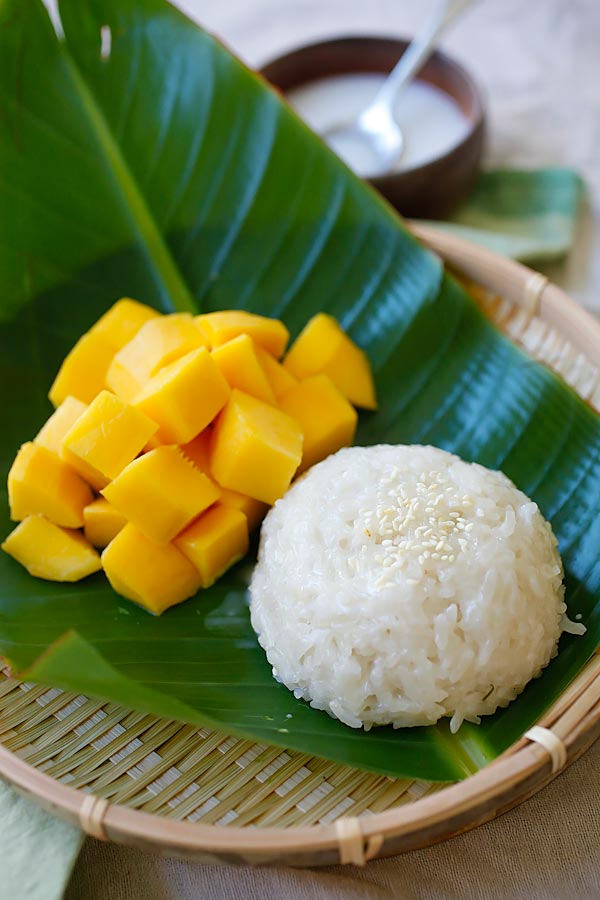
Sticky Rice
Sticky rice is also known as glutinous rice because the rice is sticky and gluey in texture.
It’s widely cultivated in Southeast Asia and one of the mainstays of Thai cuisine.
Sticky rice is commonly served with a sweet or savory topping of lentils or beans. However, the best sticky rice recipe comes with ripe and juicy fresh mangoes.
Mango Sticky Rice Recipe
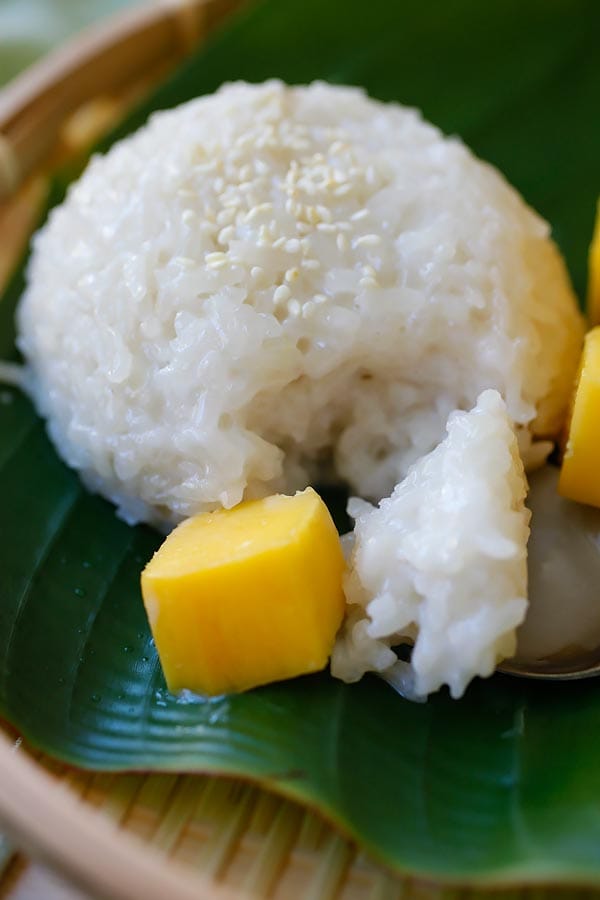
What is mango sticky rice?
It’s a popular dessert in the Indochina region (or in French “Indochine“) of Southeast Asia: Thailand, Laos, Cambodia and Vietnam.
Mango sticky rice is made with coconut milk, sugar, salt and mango cubes. The combination of mango and sticky rice are so delicious. If you love mangoes, you should also try out Mango Pomelo Sago, another amazing mango dessert.
Ingredients
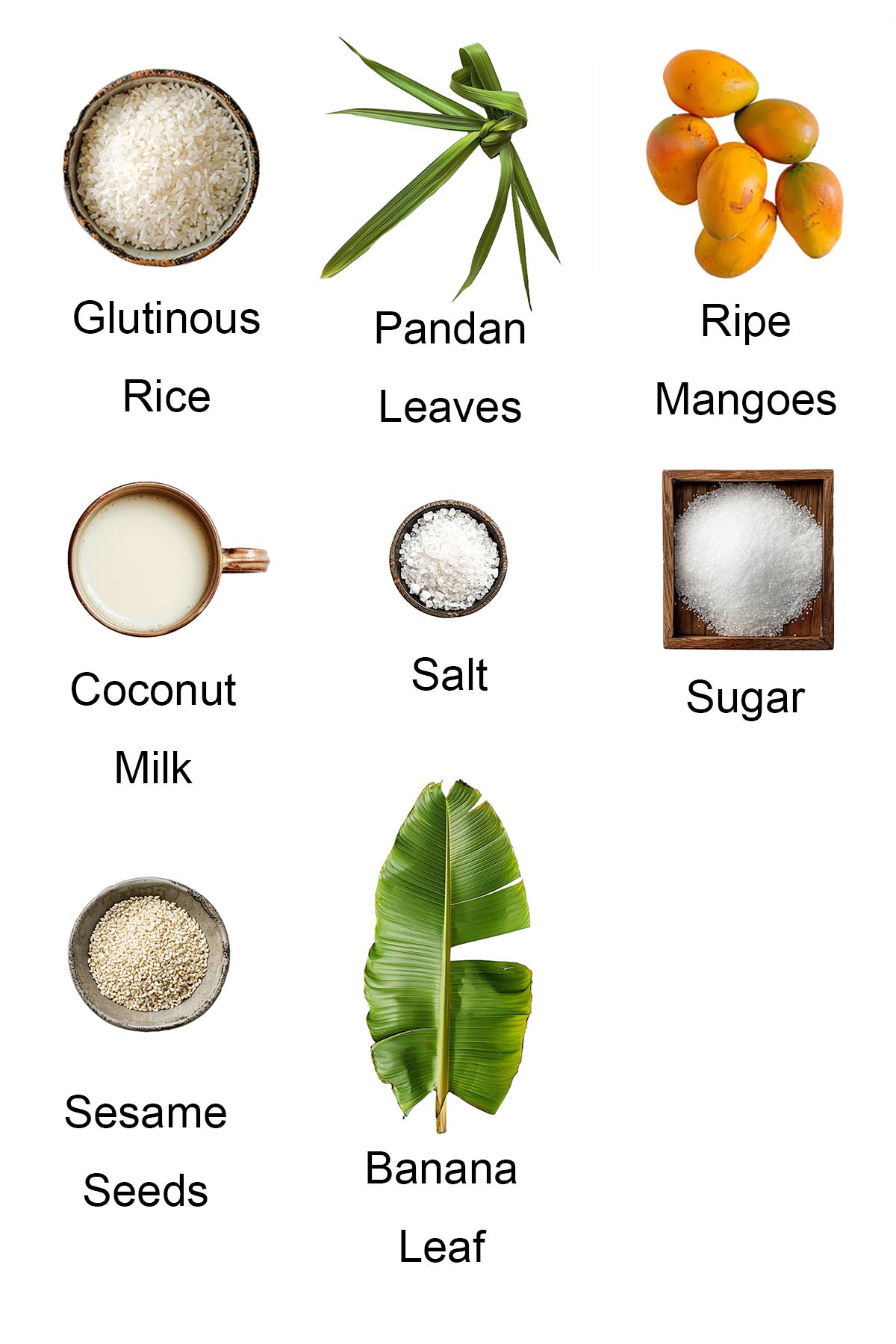
This sticky rice recipe calls for the following ingredients:
- Fresh and ripe mangoes
- Glutinous rice or sticky rice
- Coconut Milk
- Sugar
- Salt
- Pandan leaves
- Sesame seeds
- Banana leaf
See the recipe card for full information on ingredients.
Other than mangoes, you may use durian for this delicacy.
How To Make Sticky Rice
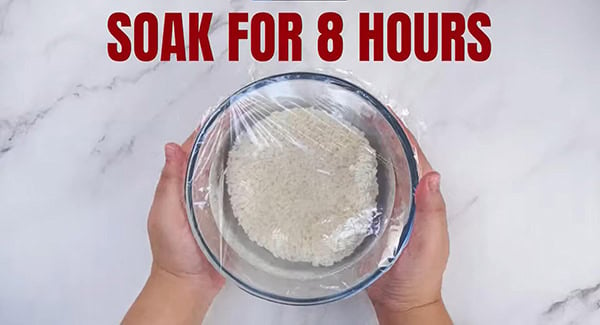
Step 1: Soak the glutinous rice for at least 8 hours or overnight.
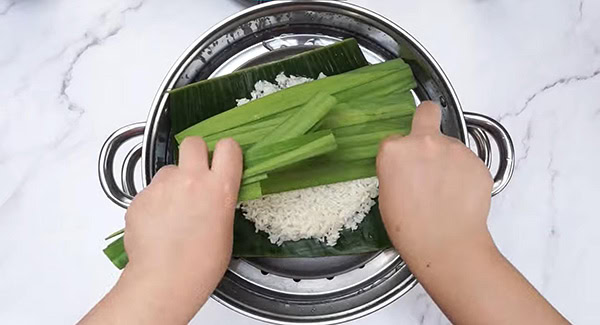
Step 2: Prepare the steamer with a banana leaf. Drain the glutinous rice and spread it out on the banana leaf. Throw in the Pandan leaves. Steam the glutinous rice for 20-25 minutes or until translucent.
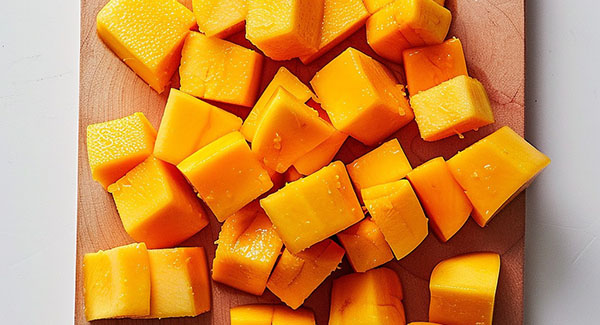
Step 3: While the rice is cooking, cut the mangoes into small cubes and chill in the refrigerator until use.

Step 4: In a sauce pan, heat up the coconut milk over low heat. Add in the salt and sugar. Keep stirring until the sugar dissolved. Remove from the heat. Pour out 1/4 cup of the coconut milk and reserve for serving.
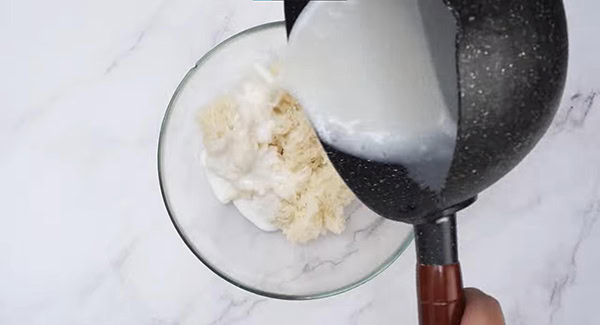
Step 5: When the glutinous rice is cooked, transfer it in to a bowl. Pour the rest of the coconut milk into the bowl and mix it with the glutinous rice. Keep stirring until it becomes a thick porridge consistency. Slowly, the rice will absorb all the coconut milk. Leave it to cool to room temperature.
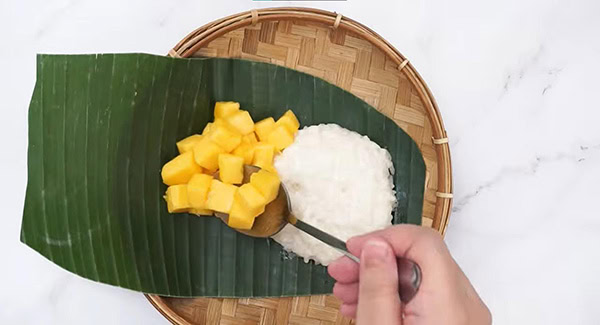
Step 6: Serve the sticky rice with the chilled mangoes. Drizzle the reserved coconut milk over the rice and top it with some toasted sesame seeds.
Cooking Tips
- Sticky rice is the star of the dish. Make sure that the cooked sticky rice is soft, sticky but retains a good bite. It shouldn’t be mushy.
- The coconut milk and sugar should be in the perfect ratio so it’s not too sweet and overwhelm the natural sweetness of fresh mangoes.
- Choose Asian mangoes from Thailand or Indian. They are sweeter in taste with vibrant orange flesh.
Frequently Asked Questions
Microwave is the best way to reheat sticky rice. Warm the rice for 1-2 minutes in the microwave.
Make sure you cover the rice with plastic wraps before reheating in the microwave.
If you don’t have a microwave at home, you can reheat by steaming the sticky rice in a steamer.
Cooked glutinous rice will last for about 4-7 days in the fridge however it’s best to eat in 2 days.
This mango sticky rice recipe is only 222 calories.
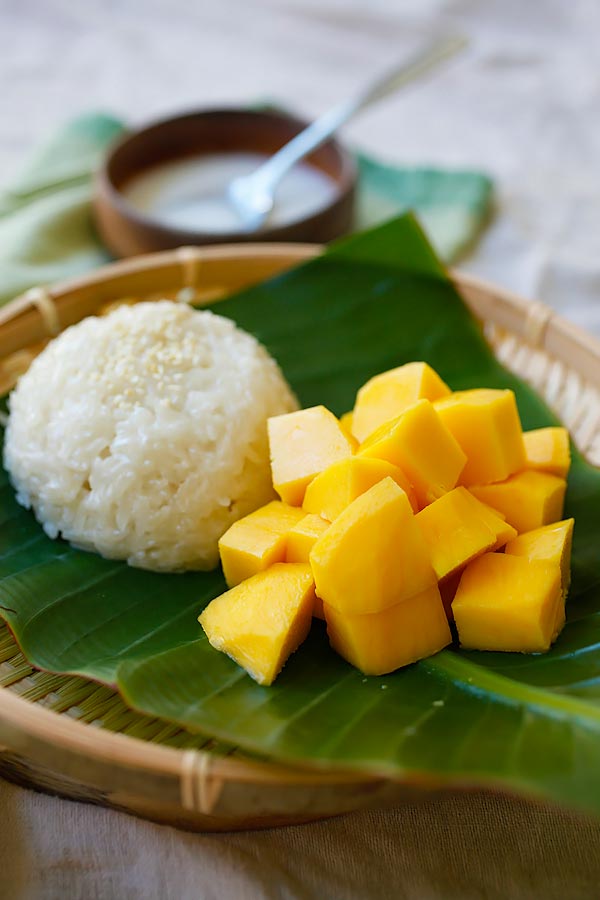
What To Serve With This Recipe
This recipe is best served as a dessert. For a wholesome Thai meal and easy weeknight dinner, I recommend the following recipes.
I hope you enjoy this post as much as I do. If you try my recipe, please leave a comment and consider giving it a 5-star rating. For more easy and delicious recipes, explore my Recipe Index, and stay updated by subscribing to my newsletter and following me on Facebook, Pinterest, and Instagram for new updates.
Other Recipes You Might Like
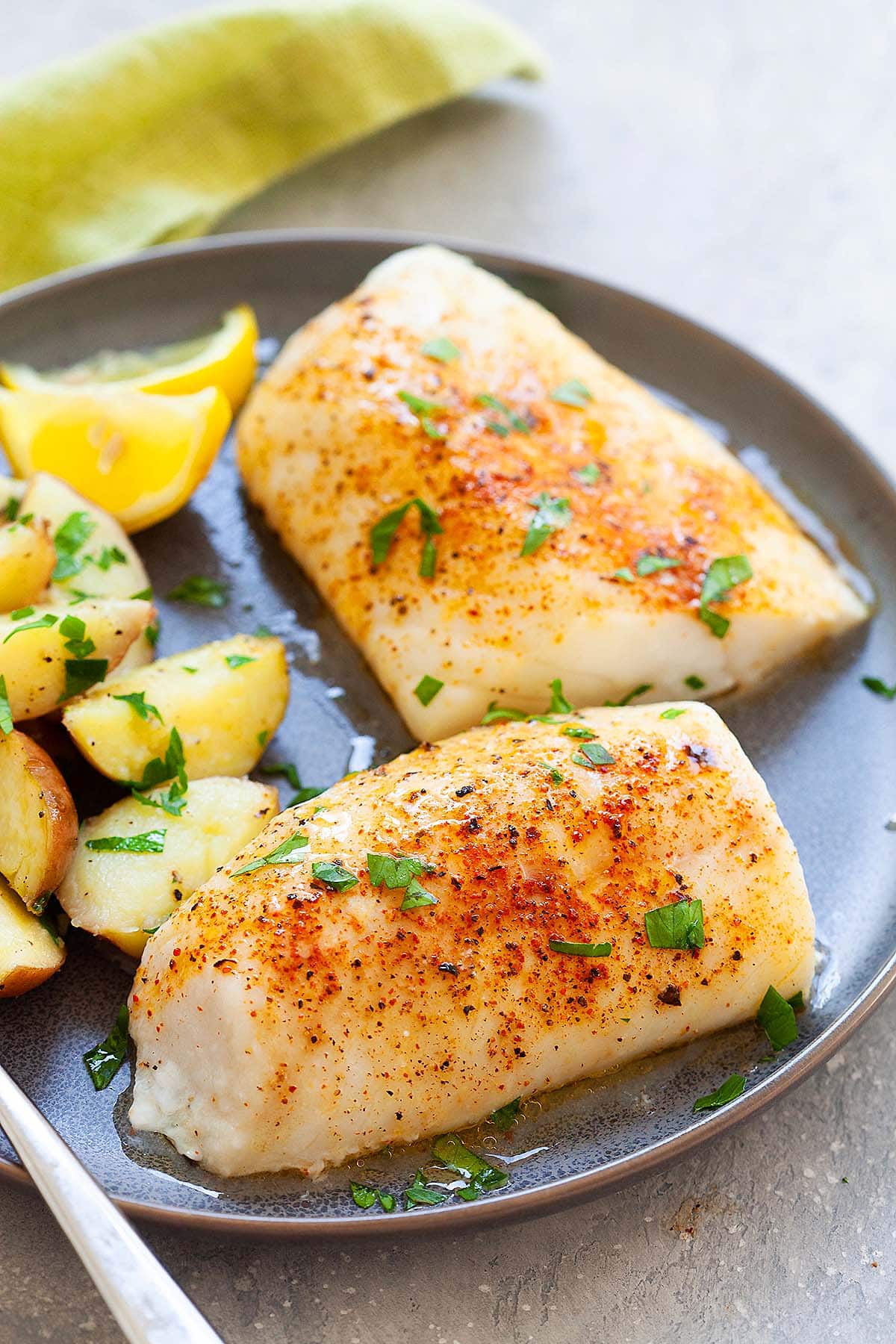
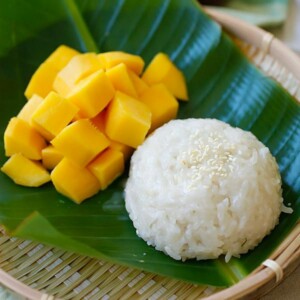
Mango Sticky Rice
Ingredients
- 1 cup glutinous rice, sticky rice
- 2-3 pandan leaves, screwpine leaves, cut into 2-inch (5cm) length
- 2-3 fresh ripe mangoes, peeled and cut into small cubes
- 1 cup coconut milk
- 1/4 cup sugar
- 1/2 teaspoon salt
- 1 tablespoon toasted sesame seeds, optional
- banana leaf, for steaming, optional
Instructions
- Soak the glutinous rice for at least 8 hours or overnight.
- Prepare the steamer with a banana leaf. Drain the glutinous rice and spread it out on the banana leaf. Throw in the Pandan leaves. Steam the glutinous rice for 20-25 minutes or until translucent.
- While the rice is cooking, cut the mangoes into small cubes and chill in the refrigerator until use.
- In a sauce pan, heat up the coconut milk over low heat. Add in the salt and sugar. Keep stirring until the sugar dissolved. Remove from the heat. Pour out 1/4 cup of the coconut milk and reserve for serving.
- When the glutinous rice is cooked, transfer it in to a bowl. Pour the rest of the coconut milk into the bowl and mix it with the glutinous rice. Keep stirring until it becomes a thick porridge consistency. Slowly, the rice will absorb all the coconut milk. Leave it to cool to room temperature.
- Serve the sticky rice with the chilled mangoes. Drizzle the reserved coconut milk over the rice and top it with some toasted sesame seeds.
Video
Notes
- You can use a muslin/cheese cloth to steam the glutinous if you do not have a banana leaf.
- Pandan leaves are usually found in the frozen section of Asian grocery stores.
- You can omit the Pandan leaves if you don’t have them readily available. This is used to give the sticky rice an extra fragrant.
Nutrition
Nutrition information is automatically calculated, so should only be used as an approximation.
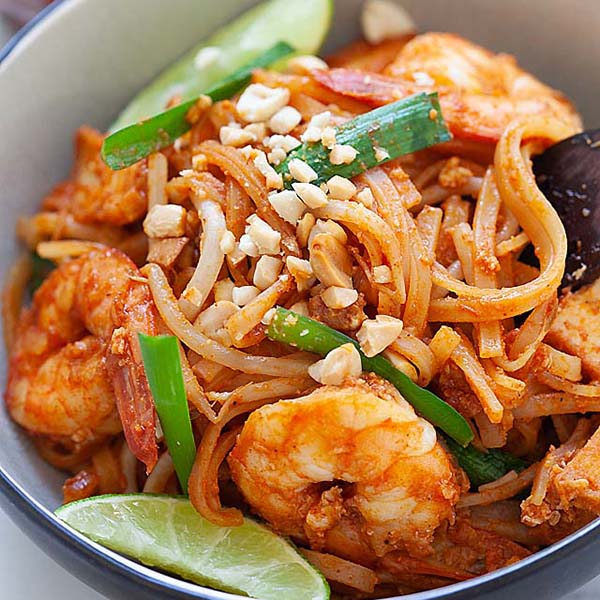
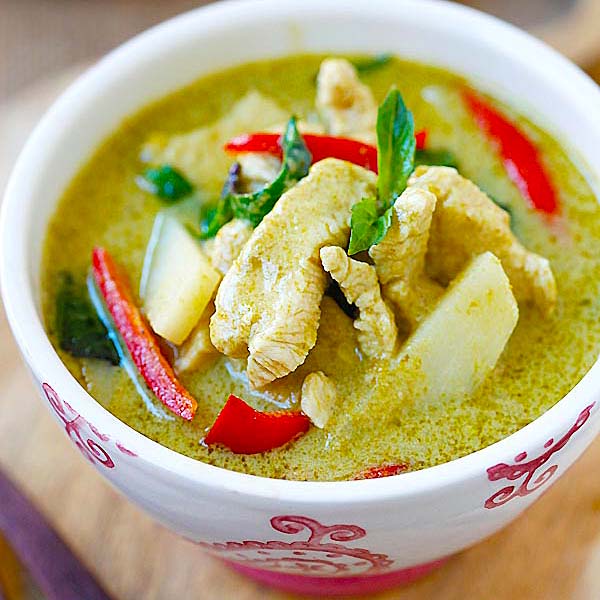
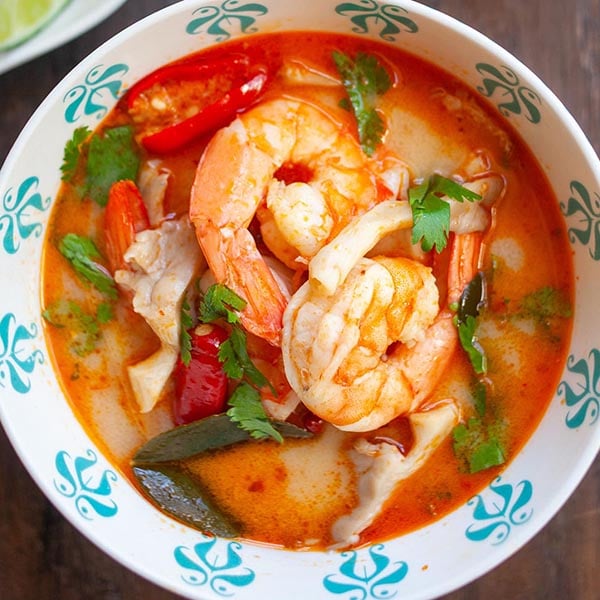
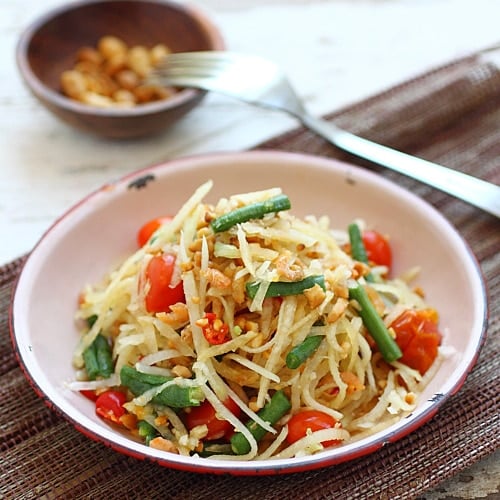






Hi Bee,
Can I make the gloutinous in rice cooker/instant pot?
Thanks
Yes, you can use rice cooker for the sticky rice. Yes, instant pot would work.
If I want to make a large batch for a party, can I make the sticky rice the night before? If I do, do I just hold it as plain steamed sticky rice without the coconut milk mixture?
Yes you can make the sticky rice a night before and add the coconut milk when ready.
Hi,
I only have canned coconut cream. Can i use this instead? Do i need to dilute it?
Thanks.
Yes it’s fine.